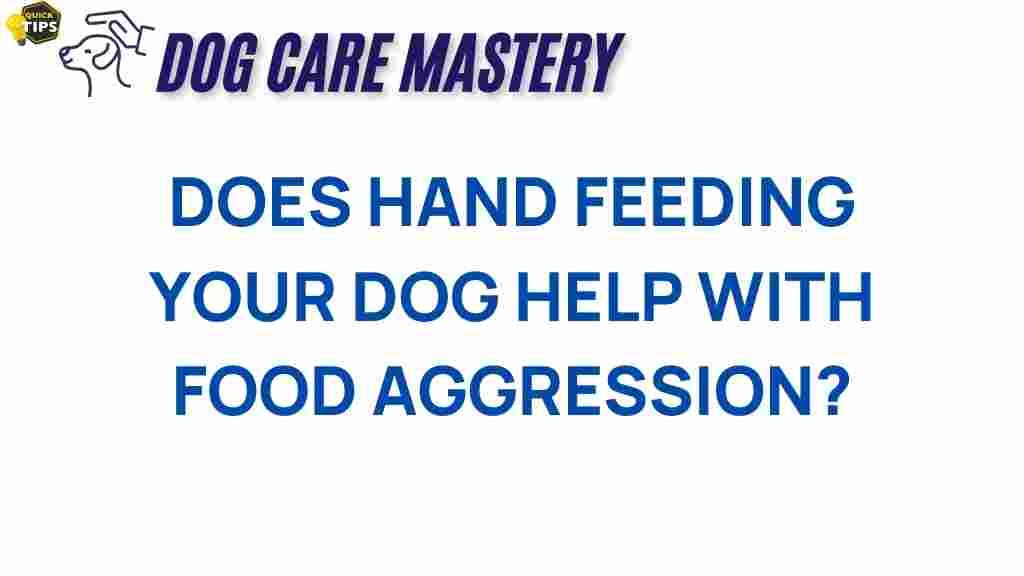Unlocking the Mystery: Can Hand Feeding Reduce Dog Food Aggression?
Dog food aggression is a common issue many pet owners face, and it can lead to serious challenges in the owner-dog relationship. Understanding the causes of this behavior and exploring effective solutions is essential for creating a harmonious environment for both you and your canine companion. One method that has gained attention is hand feeding. In this article, we will delve into whether hand feeding can effectively reduce dog food aggression and provide practical steps to implement this technique.
Understanding Dog Food Aggression
Before we explore hand feeding, it is crucial to understand what dog food aggression is. This behavior typically manifests as:
- Growling or snarling when food is near.
- Snapping or biting when approached while eating.
- Guarding their food bowl or area.
Dog food aggression can stem from various factors, including:
- Resource guarding: Dogs instinctively protect their food as a survival mechanism.
- Past experiences: Rescue dogs or those with a history of neglect may exhibit aggressive behaviors toward food.
- Fear or anxiety: A dog may feel threatened while eating and react aggressively to protect its food.
How Hand Feeding Works
Hand feeding is a technique where the owner feeds their dog directly from their hand, rather than placing food in a bowl. This method encourages trust, reduces anxiety, and helps to create a bond between the dog and its owner. The goal is to change the dog’s perception of food and eliminate the aggressive behavior associated with it.
Step-by-Step Process to Implement Hand Feeding
Here’s a detailed guide on how to use hand feeding to address dog food aggression:
Step 1: Prepare Your Dog
Before starting the hand feeding process, ensure your dog is calm and comfortable. You may want to:
- Choose a quiet environment free from distractions.
- Use a leash if necessary to prevent sudden movements.
- Observe your dog’s body language for signs of stress or aggression.
Step 2: Start with Treats
Begin the hand feeding process by using high-value treats, such as small pieces of cooked chicken or cheese. This will help your dog associate your hand with positive experiences:
- Hold a treat in your hand and let your dog sniff it.
- Allow your dog to take the treat gently from your hand.
- Repeat this several times until your dog is comfortable taking food from your hand.
Step 3: Transition to Regular Food
Once your dog is comfortable with treats, transition to their regular food:
- Fill your hand with a small amount of food.
- Present your hand to your dog, encouraging them to eat from your palm.
- Gradually increase the amount of food you offer as your dog becomes more relaxed.
Step 4: Incorporate Commands
Integrating basic commands during the hand feeding process can reinforce positive behavior:
- Use commands such as “sit” or “stay” before offering food.
- Reward compliance with food from your hand.
- Be consistent with commands to build trust and understanding.
Step 5: Monitor Progress
Regularly assess your dog’s behavior throughout the hand feeding process:
- Take note of any signs of aggression or discomfort.
- Adjust your approach if necessary, including the pace of the transition.
- Be patient; this process may take time depending on the dog’s temperament.
Troubleshooting Tips
While hand feeding can be an effective method to reduce dog food aggression, there may be challenges along the way. Here are some troubleshooting tips:
- Dog is overly aggressive: If your dog becomes aggressive during hand feeding, stop immediately and reassess the situation. You may need to take a step back to the treat phase.
- Dog refuses to eat: Some dogs may be reluctant to eat from your hand. Try offering food in smaller amounts or using more enticing treats.
- Inconsistent behavior: If your dog shows signs of aggression intermittently, consider consulting a professional trainer or behaviorist.
When to Seek Professional Help
While many dogs can benefit from hand feeding, some may require additional support. Consider seeking professional help if:
- Your dog displays severe aggression, including biting.
- You feel uncomfortable or unsafe during feeding.
- Progress is slow, and the behavior does not improve over time.
Professional trainers can provide tailored advice and implement behavior modification strategies to address dog food aggression effectively.
Conclusion
In conclusion, hand feeding can be a valuable tool in reducing dog food aggression. By fostering trust and creating positive associations with food, you can help your dog overcome their aggressive tendencies. Remember that patience and consistency are key components of this process. If you are struggling with dog food aggression, or if you want to explore additional methods, don’t hesitate to consult a professional dog trainer or behaviorist. For more tips on dog behavior, check out our training resources.
Additionally, if you are interested in understanding more about dog behavior and aggression, you can visit the American Kennel Club website for expert advice and resources.
This article is in the category Behavior and created by dogcaremastery Team
